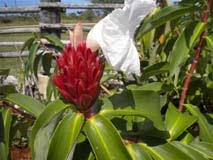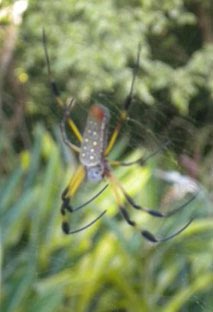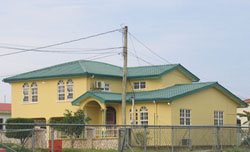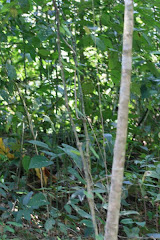
Personally, I don't mind at all. I am not a big fan of Christmas, and I hate the overemphasis on food and gifts. I have put up a small tree for our daughter and we are enjoying the efforts some Belmopan residents have made to light up their houses and yards. The whole idea of Christmas shopping in Belmopan is actually funny, unless you want to ask Santa for a bottle of gas, or a mattress...
So I had kind of given up on the idea of Christmas in Belize, until I went to the Actun Tunichil Muknal or ATM cave, a 40,000-year old Maya cave. Wow, what a special place, better than any archeological museum you can ever imagine. After two hours of swimming, climbing and crawling through narrow cracks in the pitch dark with Carlos our guide, we arrived at 'the cathedral', a sacred place where thousands of years ago Mayan priests did their rituals and human sacrifices. There, deep down in the Mayan underground, I saw the most beautiful Christmas scene ever. Doesn't it look like a nativity group? Amazing hey!
If you forget for a minute that there are also the 1400-year old remains of a teenage sacrifice victim who is believed to be clubbed and left for dead, you can actually feel the peace in that cave.

And on that note I wish you all a peaceful Christmas and an Amazing 2010!











































